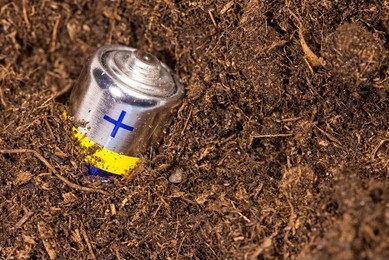With the increase of population and the speed of industrialization, the discharge of industrial waste, urban sewage, and the unreasonable application of pesticides and chemical fertilizers in the process of agricultural farming have caused a large number of heavy metal pollutants to enter the soil through various ways. Heavy metals are not biodegradable and have the characteristics of hidden and high toxicity, which will not only affect the yield and quality of crops but also cause great harm to human health after entering the soil, especially in agricultural fields.

Due to the complex and heterogeneous composition of the soil environment and the complicated chemical reaction mechanism, there are many forms of heavy metals in the soil, and the effectiveness of different forms of heavy metals is different, so the toxicity of heavy metals is not only related to their total amount but also determined by the distribution of forms to a greater extent.
Therefore, Lifeasible has established a methodological system for the detection and analysis of heavy metals in their active state. This is an effective way to understand the extent of heavy metal pollution and predict the impact of heavy metals on ecosystems and human health, and can also be applied to remediation and treatment of heavy metal pollution.
We offer a wide range of testing methods
| Category | Methods | Details |
Direct detection |
Chemical leaching analysis method | We use a proportional reagent solution (one or several reagents mixed), or several different reagent solutions (leaching capacity to strengthen, in a certain order of leaching), according to a certain soil-liquid ratio and leaching process method leaching, and finally determine the content of heavy metals in the leaching solution. From the use of extraction reagents, the method can be divided into primary leaching and continuous leaching method. |
| Physical analysis methods | We use some physical principles to analyze the heavy metals in soil, such as diffusion and optical (e.g., atomic absorption spectrometry, UV-Vis’s absorption spectrometry, infrared spectrometry, plasma spectrometry), which are fast, sensitive, and easy to use. | |
Indirect detection |
Indicator plant assay | We generally analyze the effectiveness of heavy metals in two aspects. Symptoms of plant damage, including changes in color and shape of roots, stems, and leaves, and changes in leaf pigment content and nitrogen content of plant leaves. This is a quick and easy way to determine the effectiveness of heavy metals in soil by plant damage symptoms without causing damage to plants and soil. |
| Microbiological methods | Microorganisms are in close contact with the soil microenvironment and many cases, their quality and activity can be ideal indicators of soil contamination. In microbial testing, we use some characteristic indicators of microorganisms, including changes in microbial biomass, community structure, metabolic entropy, etc., to evaluate soil heavy metal contamination. | |
| Animal detection | Compared with the plant and microbial methods, we offer the animal method, which is also effective in detecting the toxicity and bio effectiveness of soil heavy metals and is generally used for qualitative analysis of soil contamination. |
In addition, Lifeasible has a complete solution for the extended field of effective state metals, i.e., bioavailable metals analysis. To learn more about our solutions for the detection of effective metals in soils, please contact our 24/7 online staff for the latest portfolio information.
Lifeasible has established a one-stop service platform for plants. In addition to obtaining customized solutions for plant genetic engineering, customers can also conduct follow-up analysis and research on plants through our analysis platform. The analytical services we provide include but are not limited to the following:
STU-CRISPR System Improves Plant Genome Editing Efficiency
April 19, 2024
Application of Exosomes in Facial Beauty
April 12, 2024